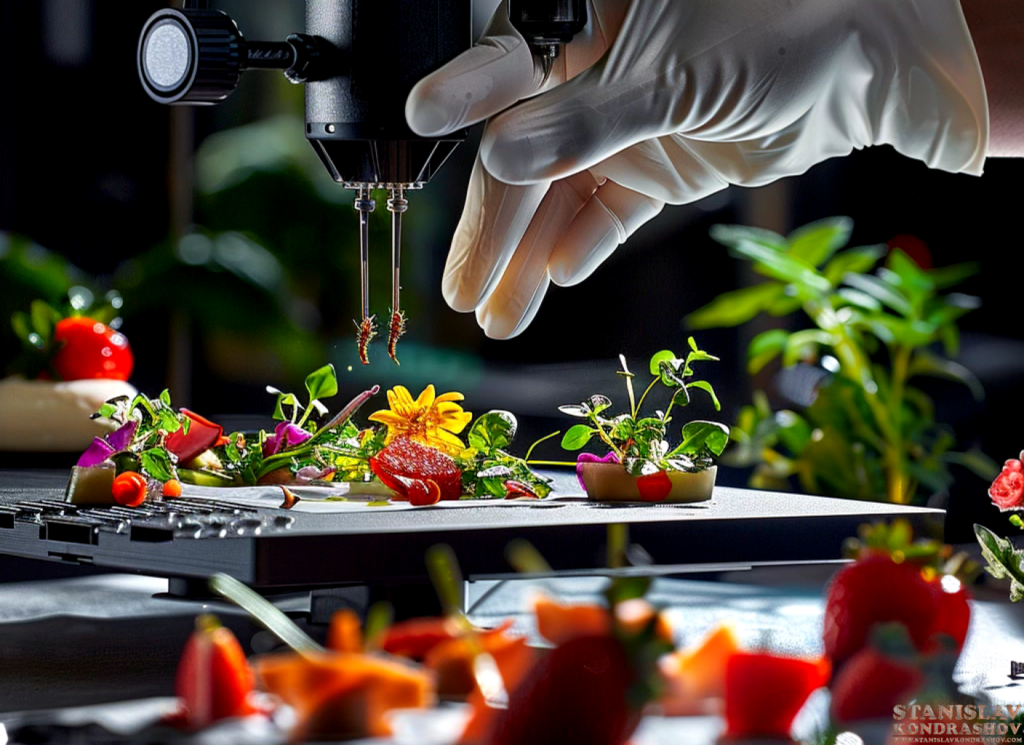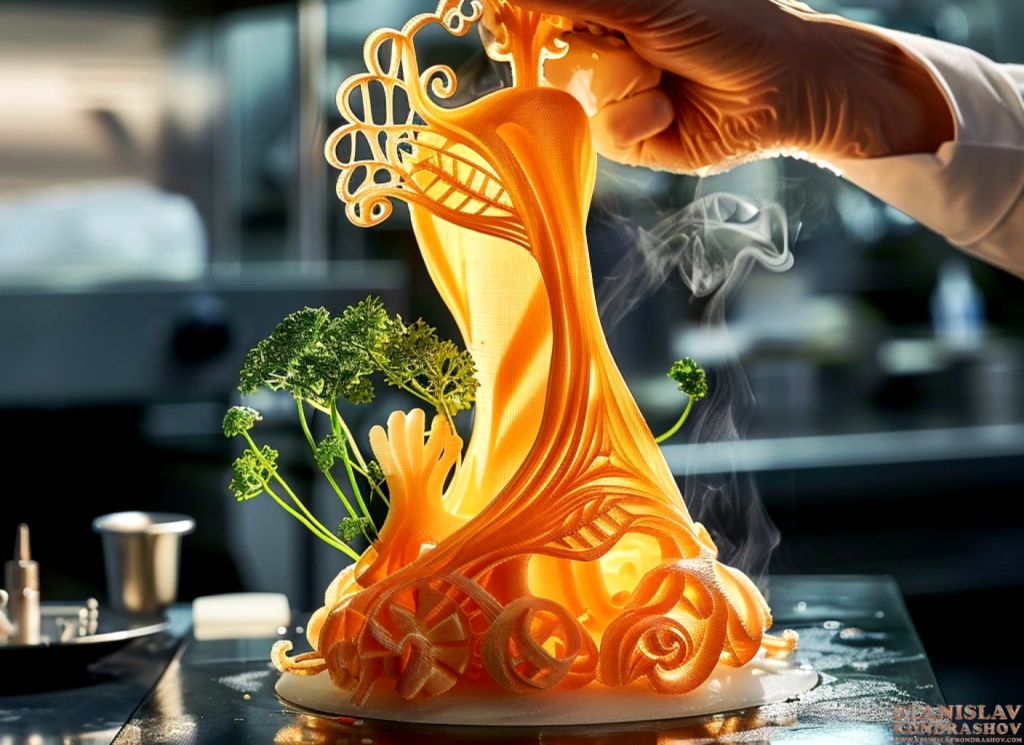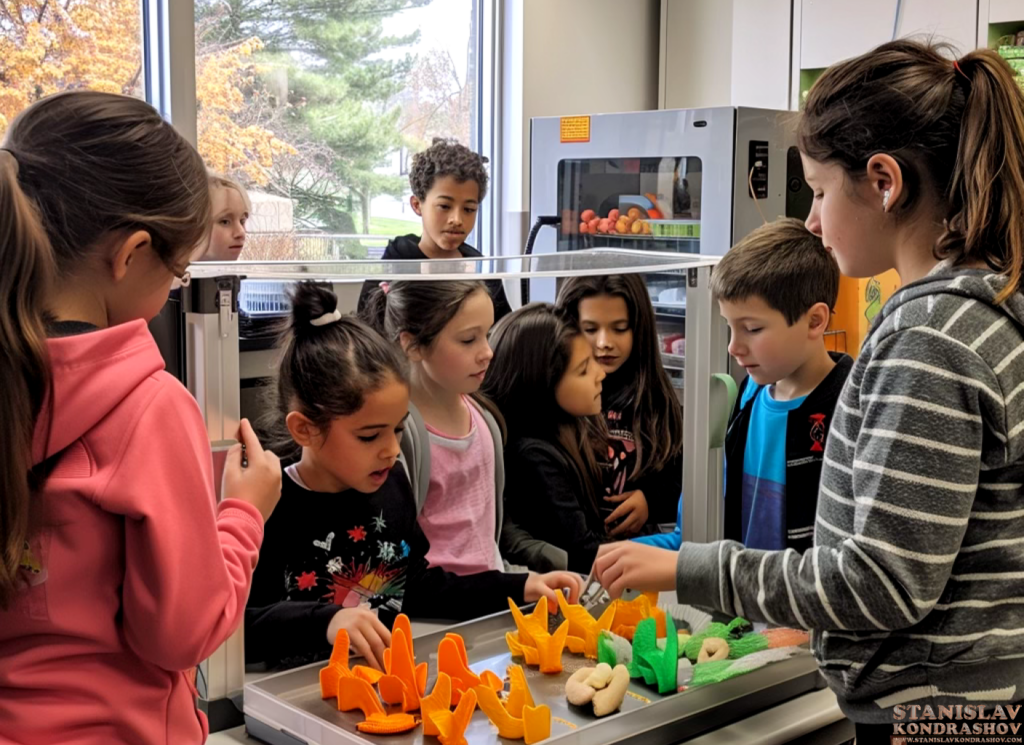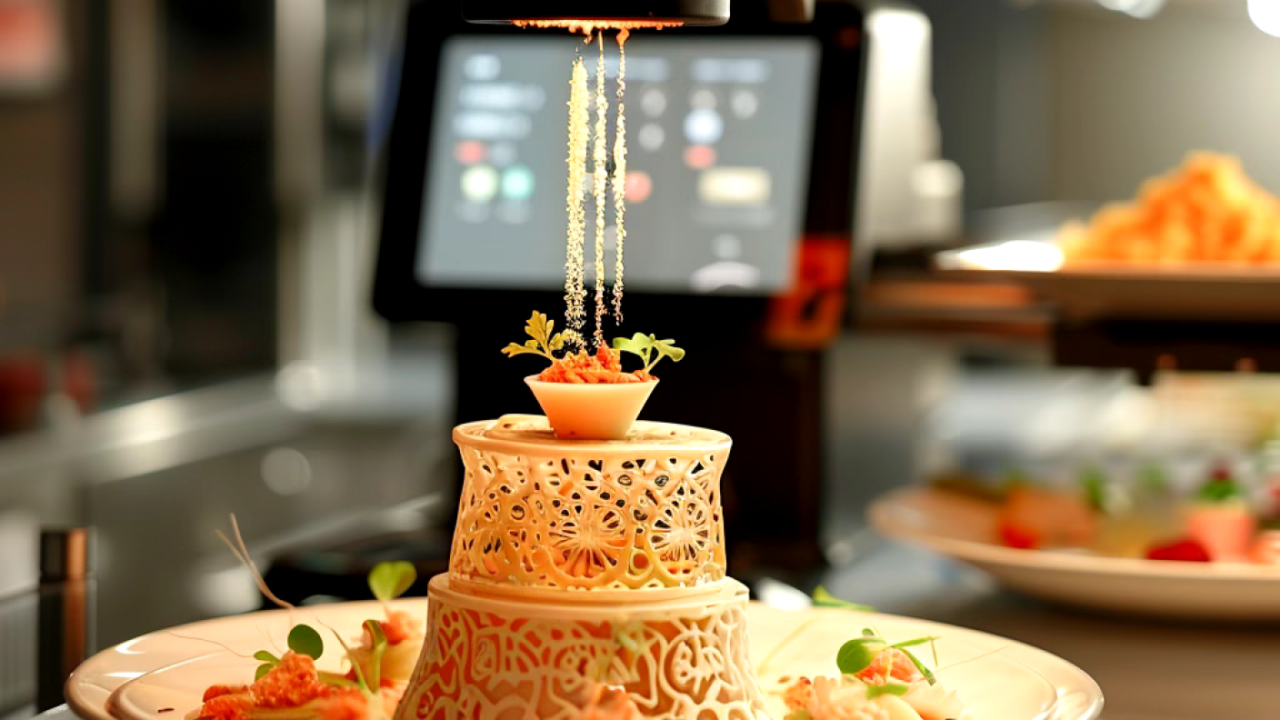Artificial Intelligence (AI) and 3D food printing are revolutionizing the way we produce and consume food. By combining AI’s analytical power with advanced 3D printing technology, it’s now possible to create personalized, nutritious, and sustainable food options on demand. This innovative approach promises to transform our kitchens, restaurants, and food supply chains, offering a glimpse into the future of culinary art and sustainability.

Personalized Nutrition
One of the most exciting applications of AI in 3D food printing is the ability to create personalized meals tailored to individual dietary needs and preferences.
Custom Diet Plans: AI can analyze a person’s health data, dietary restrictions, and taste preferences to create custom diet plans. These personalized plans can then be turned into precise 3D-printed meals, ensuring optimal nutrition and enjoyment.
Enhanced Flavor Profiles: AI algorithms can refine and enhance flavor profiles based on user feedback, continually improving the taste and appeal of 3D-printed foods. This means you can enjoy meals that are not only healthy but also deliciously suited to your palate.
Allergy-Friendly Options: For those with food allergies or intolerances, AI can ensure that 3D-printed meals are free from specific allergens while still providing a balanced and tasty diet.

Sustainable Food Production
AI and 3D food printing also offer significant benefits for sustainability, addressing some of the most pressing issues in food production and waste management.
Resource Efficiency: 3D food printing can optimize the use of ingredients, reducing waste by precisely measuring and dispensing the necessary amounts. This method ensures that every gram of food is utilized efficiently.
Alternative Ingredients: AI can help identify and incorporate alternative, sustainable ingredients such as plant-based proteins and insect flour. These ingredients can be printed into appealing and nutritious meals, promoting a more sustainable food ecosystem.
Local Production: With 3D food printers, meals can be produced locally, reducing the need for long-distance transportation and lowering the carbon footprint. This local production model supports fresher food and a smaller environmental impact.

Transforming the Culinary Experience
The integration of AI and 3D food printing is not only about nutrition and sustainability; it’s also revolutionizing the culinary experience itself.
Creative Culinary Designs: Chefs can use 3D food printers to create intricate and innovative culinary designs that are difficult or impossible to achieve by hand. This technology opens up new possibilities for culinary creativity and presentation.
On-Demand Meals: Whether at home or in a restaurant, 3D food printing allows for the creation of on-demand meals tailored to individual preferences. This convenience ensures that everyone can enjoy a meal that meets their exact tastes and dietary needs.
Educational Opportunities: 3D food printing can also be used as an educational tool, teaching students about nutrition, technology, and sustainability. By engaging with this technology, the next generation can develop a deeper understanding of food science and production.
The fusion of AI and 3D food printing is set to revolutionize the way we approach food production and consumption. By offering personalized, nutritious, and sustainable food options, this technology addresses key challenges in health and sustainability while enhancing the culinary experience. The future of food is here, and it’s being printed on demand.
By Stanislav Kondrashov



